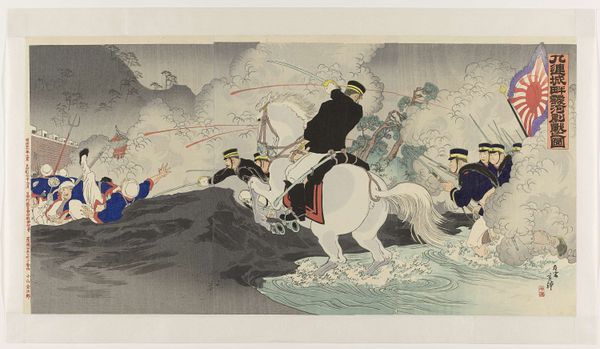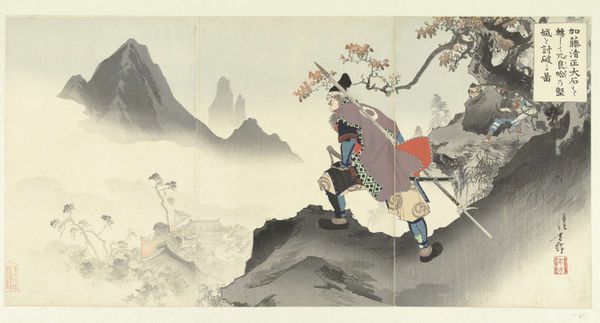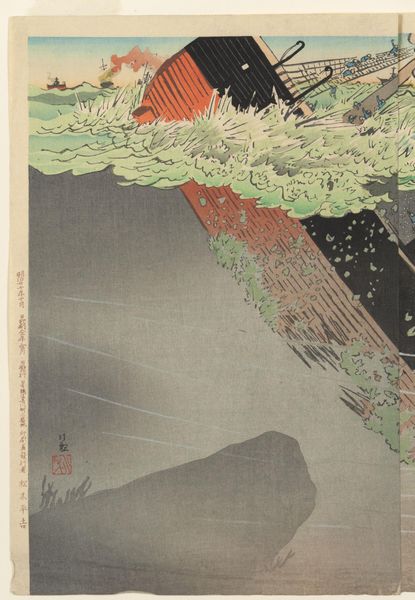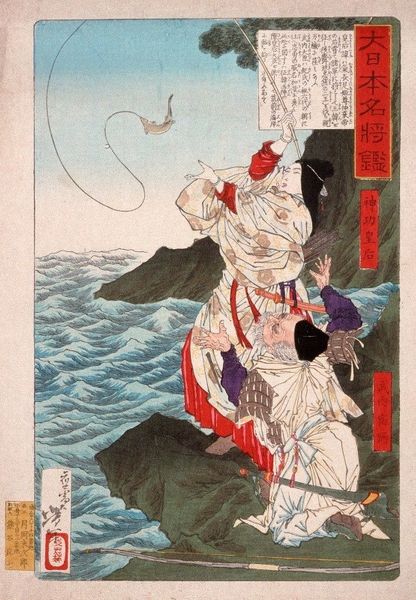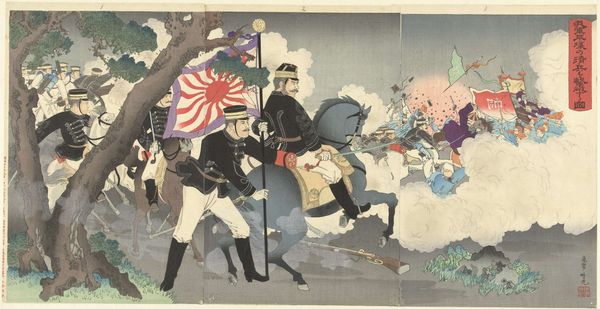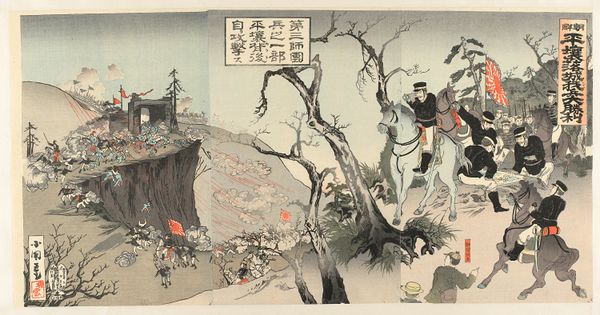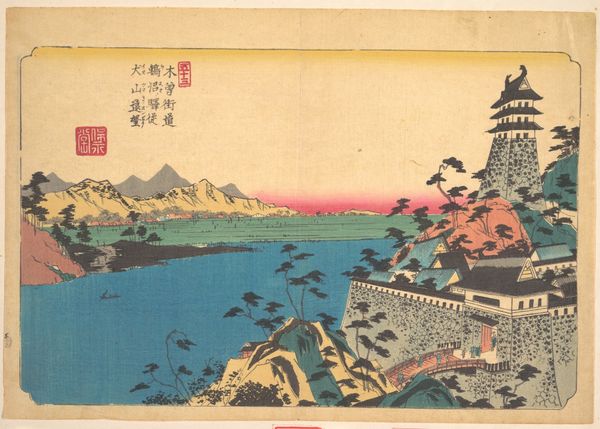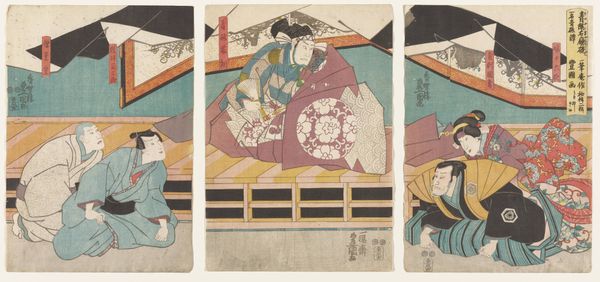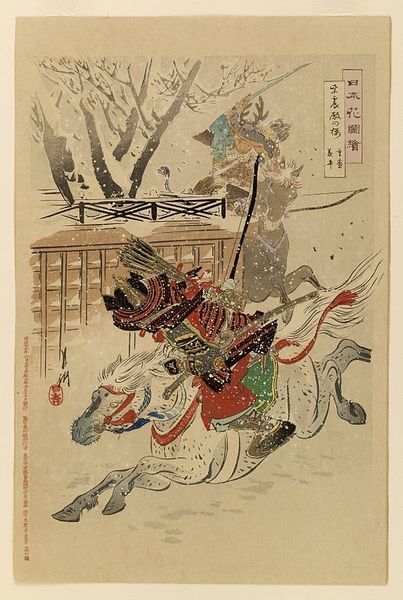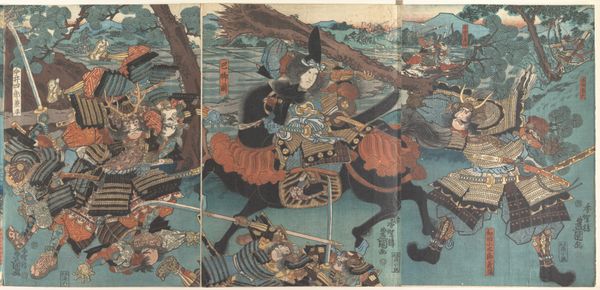
De geallieerde troepen vallen Peking aan; de Japanse troepen voor de poort van Chaoyang. Possibly 1900 - 1908
0:00
0:00
kajitahanko
Rijksmuseum
print, woodblock-print
#
water colours
#
narrative-art
# print
#
asian-art
#
war
#
landscape
#
woodblock-print
#
watercolour illustration
#
mixed media
Dimensions: height 359 mm, width 713 mm
Copyright: Rijks Museum: Open Domain
Curator: This work, whose creation is estimated between 1900 and 1908, depicts the Allied troops attacking Peking, specifically the Japanese troops at the Chaoyang gate. It's by Kajita Hanko and held in the Rijksmuseum. Editor: What strikes me immediately is the layering. It’s this hazy, almost dreamlike scene. The bold colours of the flag are sharply set against the grey tonalities of the smoke and sky, giving a unique feel of distance and chaos. Curator: Indeed. Kajita Hanko’s depiction here is not simply a battle scene but also a political statement viewed through the lens of Japanese expansionism during that era. Note the flag as a symbol of dominance and consider the complex intersectional implications tied to imperialism and military power. Editor: You are right; however, structurally, observe how the composition uses atmospheric perspective to create depth. The artist deliberately uses a muted palette for the distant city and contrasts it against the defined figures in the foreground, all drawing the eye toward the dynamic interaction of colour and space. Curator: Precisely. We need to think about the use of Japonisme. It influenced artistic license. In Western depictions of war during that period, did such dreamlike artistic devices dominate when those nations were the subjects in similar war depictions? Editor: That’s astute. Semiotically, the puffs of smoke act as dividers that allow Kajita to imply depth and scale by positioning different narrative elements from different points of the scene on the canvas. This, in combination with the strategic coloration, constructs visual drama. Curator: I also want to think about how the depiction serves the viewer with nationalistic views in Japan at that moment. The power dynamic illustrated with the positioning of soldiers is clear here. It provides more insight into race and military strategy than one would have by just seeing the compositional strategy. Editor: It provides us a stark tension between artistic construction and social context. It highlights the work’s dual identity as both a painting, using visual structures to elicit meaning, and historical documentation of how race and gender relations may impact a cultural movement. Curator: Examining it today reminds us of how deeply art is entwined with social structures, power and historical context. Editor: Yes. Considering it, both formally and contextually, enriches our viewing.
Comments
No comments
Be the first to comment and join the conversation on the ultimate creative platform.
